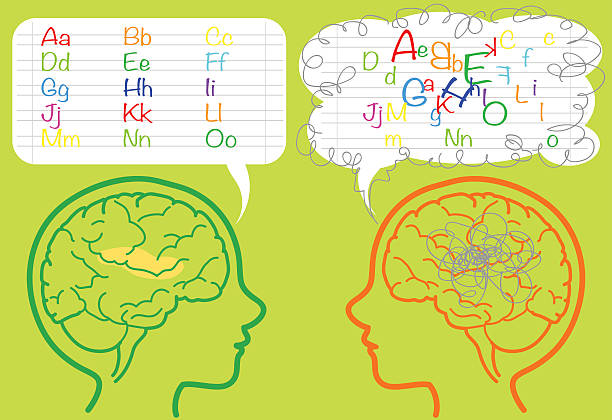Learning Disability vs Bipolar Disorder: Breaking Down the Overlap and Misconceptions
Introduction: Understanding Learning Disabilities and Bipolar Disorder
When it comes to mental health and cognitive challenges, two terms often misunderstood and conflated are learning disabilities and bipolar disorder. While these conditions are distinct, their overlapping symptoms can lead to confusion, misdiagnosis, and improper treatment. This article aims to break down the differences, explore the overlap, and address common misconceptions surrounding these conditions.
Understanding the nuances of learning disabilities and bipolar disorder is crucial for accurate diagnosis and effective treatment. Both conditions can significantly impact an individual’s life, but they do so in very different ways. By shedding light on their unique characteristics and shared challenges, we can promote better awareness and support for those affected.
Defining Learning Disabilities: Key Characteristics and Challenges
A learning disability is a neurological condition that affects an individual’s ability to acquire, process, or retain information. These disabilities are not indicative of intelligence but rather of how the brain processes specific types of information.
- Dyslexia: Difficulty with reading and language processing.
- Dyscalculia: Challenges with math and numerical reasoning.
- Dysgraphia: Struggles with writing and fine motor skills.
Learning disabilities often manifest during childhood and can persist into adulthood. They can affect academic performance, social interactions, and self-esteem. Early diagnosis and intervention are key to managing these challenges effectively.
Bipolar Disorder: Symptoms, Types, and Diagnosis
Bipolar disorder is a mental health condition characterized by extreme mood swings, including emotional highs (mania or hypomania) and lows (depression). These mood episodes can vary in intensity and duration, significantly impacting daily life.
There are several types of bipolar disorder:
- Bipolar I: At least one manic episode lasting a week or requiring hospitalization.
- Bipolar II: A pattern of depressive episodes and hypomanic episodes, but no full-blown manic episodes.
- Cyclothymic Disorder: Periods of hypomanic and depressive symptoms lasting at least two years.
Diagnosis often involves a combination of clinical interviews, family history, and symptom tracking. Misdiagnosis is common, especially when symptoms overlap with other conditions like learning disabilities.
Common Misconceptions About Learning Disabilities and Bipolar Disorder
One of the biggest misconceptions is that learning disabilities and bipolar disorder are interchangeable terms. This is far from the truth. Learning disabilities are cognitive in nature, while bipolar disorder is rooted in mood regulation.
Another myth is that individuals with either condition lack intelligence or are incapable of leading successful lives. In reality, many people with learning disabilities or bipolar disorder excel in their fields with the right support and treatment.
Overlapping Symptoms: Where the Confusion Begins
Both learning disabilities and bipolar disorder can present with symptoms like difficulty concentrating, irritability, and poor academic or work performance. These shared traits often lead to misdiagnosis, especially in children and adolescents.
Cognitive Impairments vs. Mood Dysregulation: Key Differences
While there are overlaps, the core differences lie in the nature of the impairments. Learning disabilities primarily affect cognitive functions like reading, writing, and math, whereas bipolar disorder impacts emotional regulation and mood stability.
The Role of Genetics and Neurology in Both Conditions
Both learning disabilities and bipolar disorder have genetic and neurological underpinnings. Studies show that family history plays a significant role in the likelihood of developing either condition.
How Misdiagnosis Can Impact Treatment and Outcomes
Misdiagnosing a learning disability as bipolar disorder—or vice versa—can lead to ineffective treatment plans. For example, medication for bipolar disorder may not address the challenges of a learning disability, and vice versa.
Co-Occurrence: When Learning Disabilities and Bipolar Disorder Exist Together
In some cases, individuals may have both a learning disability and bipolar disorder. This co-occurrence can complicate diagnosis and treatment, requiring a multidisciplinary approach for effective management.
Strategies for Accurate Diagnosis and Assessment
Accurate diagnosis involves a comprehensive evaluation that includes psychological testing, medical history, and input from educators or family members. Collaboration between mental health professionals and educators is essential.
Tailored Treatment Approaches for Each Condition
Treatment for learning disabilities often involves educational interventions, while bipolar disorder is typically managed with a combination of medication and therapy. Tailoring treatment to the individual’s needs is crucial for success.
Breaking the Stigma: Promoting Awareness and Understanding
Stigma surrounding learning disabilities and bipolar disorder can prevent individuals from seeking help. Public awareness campaigns and inclusive education initiatives can play a significant role in breaking down these barriers.
For more information on disability screening and inclusive education, visit Prashast.org.
Conclusion
Understanding the differences and overlaps between learning disabilities and bipolar disorder is essential for accurate diagnosis and effective treatment. By addressing misconceptions and promoting awareness, we can create a more inclusive and supportive environment for those affected by these conditions.
FAQ
- What is the main difference between learning disabilities and bipolar disorder?
- Learning disabilities primarily affect cognitive functions like reading and writing, while bipolar disorder impacts mood regulation and emotional stability.
- Can someone have both a learning disability and bipolar disorder?
- Yes, it is possible for an individual to have both conditions, which can complicate diagnosis and treatment.
- How can I get screened for a learning disability?
- You can visit organizations like Prashast.org for resources on disability screening and inclusive education.



